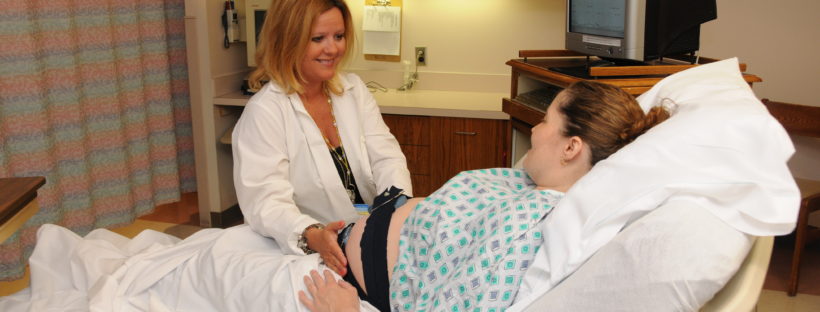by, Summer Hunt
This time of year from late July into August, many moms are preoccupied with back-to-school shopping for all the basics: pencils, paper, glue and the like, as well as products like paper towels, hand soap and facial tissue. Just as these items are important for school-age kids, babies and toddlers have “back-to-childcare (and preschool)” needs, too—and diapers top that list.
Did you know that babies and toddlers can’t attend childcare without an adequate supply of extra diapers? It may not seem like much, but for the 1 in 3 families who don’t have enough diapers to keep their babies clean, dry and healthy, buying extras typically breaks the bank. Without enough diapers, parents are forced to choose between work—and a paycheck—and taking care of baby.
The Harsh Realities of Poverty
Diapers cost $70-$80 per month, per baby, and parents can’t use food stamps for diapers—in fact, there is zero direct government assistance for diapers. Low-income families can’t afford to buy diapers in bulk, and many do not have access to big-box discount stores or online shopping. This means families hurting the most financially are hit hardest when it comes to buying essential care items like diapers. In fact, the poorest 20% of Americans spend nearly 14% of their income (after taxes) on diapers, according to the National Diaper Bank Network (citing 2014 government data)—that’s $1 out of every $7 of their average $11,253 income spent on diapers, or $1,575 a year on average.
Parents just want to do right by their children. We spoke with four moms last year who talked about their experiences with diaper need. These families are doing their best to keep their babies happy and healthy, even if that means going without or making tough decisions about paying other bills. And with 5.3 million babies in America living in low-income families, these moms are not alone in their struggles.
Nurses on the Front Lines
AWHONN is proud of all the work our nurses to do to take care of moms and babies, especially those in the most vulnerable populations. Our Healthy Mom&Baby Diaper Drive gives nurses the recognition they deserve when they go beyond patient care and collect items like diapers, wipes, clothes, car seats for their tiniest patients.
Across the country, at section and chapter meetings, through community baby showers and diaper drives, when donating diapers to diaper banks and women’s shelters, and in their own hospitals and clinics, nurses are on the front lines every day combatting diaper need for their patients.
Let Us Share Your Efforts!
What are YOU doing in your area to make sure that babies are clean, dry and healthy? Are you:
- Giving out diapers at community and education events?
- Participating in a diaper drive event with your local faith community or civic group?
- Sharing diapers with families in need in any other way?
Tell us your stories at AWHONN.org/diaperdrive, or contact our Diaper Drive consultants Jade Miles and Heather Quaile. Our consultants can also help you increase your efforts or start something new and make sure that your current successes are counted in our final totals. You can also visit DiaperDrive.org to make a dollar donation that will be used to purchase diapers at wholesale for diaper banks across the country. Are you an advocate for cloth diapering? There are several diaper banks that accept cloth diapers, and you could even initiate a cloth diaper drive in your community!
As families everywhere get ready to head back to school, why not toss an extra pack of diapers into your cart to donate to your local bank? Or, head over to DiaperDrive.org while surfing the Internet for prime deals on books and binders and donate $20 dollars to diaper a baby for two weeks. You’ll ensure a brighter future and a better bottom line for babies everywhere—and that’s a guaranteed A-plus in our books.

 Summer Hunt
Summer Hunt
Summer Hunt is the editorial coordinator for publications at AWHONN



 Donna is a Perinatal Clinical Specialist at JFK Medical Center in NJ. She has always loved OB nursing and also enjoys teaching. She is currently an adjunct instructor at Kaplan University and Walden University. She was the Hospital Lead for AWHONN’s PPH Project.
Donna is a Perinatal Clinical Specialist at JFK Medical Center in NJ. She has always loved OB nursing and also enjoys teaching. She is currently an adjunct instructor at Kaplan University and Walden University. She was the Hospital Lead for AWHONN’s PPH Project.

 Elizabeth McIntire, WHNP,WHNP-C, EFM-C
Elizabeth McIntire, WHNP,WHNP-C, EFM-C




 There is a moment after labor when you realize that not only is your sweet little baby a patient, but that you are too. At least for me, that was something that hadn’t really registered. On the day that my little baby girl Isla was born I very quickly began to understand we would both need a ton of care in the hospital and at home.
There is a moment after labor when you realize that not only is your sweet little baby a patient, but that you are too. At least for me, that was something that hadn’t really registered. On the day that my little baby girl Isla was born I very quickly began to understand we would both need a ton of care in the hospital and at home.
 Danni Starr
Danni Starr